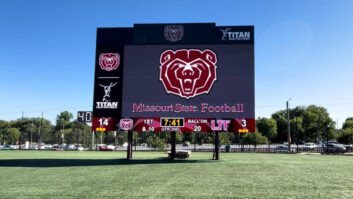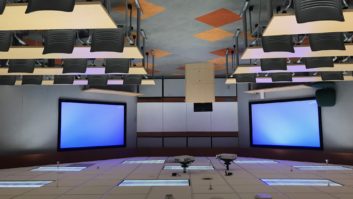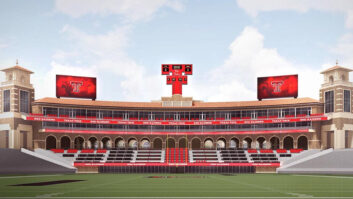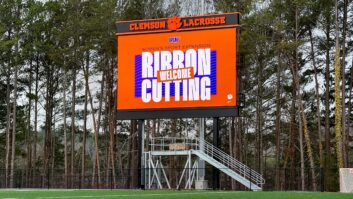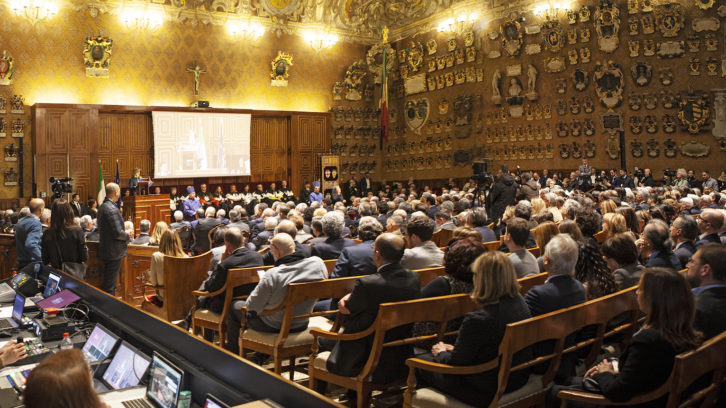
In 1678 Elena Cornaro became the world’s first woman to be awarded a university degree, after being allowed to study Philosophy at the University of Padua. The university has also produced great literary figures, engineers, mathematicians and doctors, such as Vincenzo Gallucci, who carried out the first heart transplant in Italy. Professors, scientists, jurists and literati made it a centre of culture throughout Europe, with alumni including Marcantonio dalla Torre, William Harvey, discoverer of blood circulation, and Alexander Stewart (illegitimate son of King James IV of Scotland), who studied under Erasmus in Padua and later became Lord Chancellor of Scotland. The university recently carried out a high-profile upgrade to three extremely important rooms: the Main Hall, the Ippolito Neivo Hall and the Ancient Archive.
Consultants for the project were De.re.com and installation/system integration was by MosaicoGroup.
Tender spec
De.re.com account manager Stefano DeTroia explains: “Due to the nature of the rooms, the university asked me to draw up the project, prepare tender specifications and ensure everything was installed and configured in compliance with the project. The brief was to upgrade the existing equipment and ensure that appropriately trained in-house operators were able to handle at least 80% of the events held, previously contracted out to external services, at a considerable cost.”
Since the rooms are used for ceremonial events, the hardware had to meet stringent quality requisites, ensure flexibility and any future expansion or upgrade. Backward compatibility with VGA signals was also kept. The video control system is full HD but already compatible with low-latency 4K60 signals; to reduce interconnection systems between audio and video, AV encoders were chosen with AES67 audio protocol to ensure native interaction with Dante, used for all the audio signal flows. Video coverage was entrusted to top-end Sony dome cameras.
DeTroia had already worked on projects using almost all the products, but decided to include the AMX 2400 series for the first time, as they ensured the required quality, latency and compatibility (audio on AES67). This was the first project in Italy on which the series was used.
“A key challenge on this project was to achieve top grade results without carrying out any structural work on the building, as the rooms are under the protection of the department of fine arts,” adds DeTroia. “It was forbidden to carry out any work on walls or decorations, and new units installed had to have free-standing supports. The RCF column speakers have a custom colour finish to minimise visual impact and the Main Hall’s control desk and equipment rack a wood finish matching the antique furnishings.
“The aspects that distinguish this project from others I’ve worked on in the past are definitely having replaced outdated hardware, completely changing the systems’ philosophy, switching from a cabled analogue set-up to digital and over-IP without carrying out any work on the unique building.”
Project workflow
Following the administrative work and the purchase of the products foreseen by the call for tenders, MosaicoGroup proceeded with the supply and installation, beginning with the cable and fibre runs for signal transport; then the special supports for the cameras and the projection screens and lastly all the recording equipment, signal processors, video projection equipment, decoders, encoders, etc.
Roberto Tramarin, senior sales director with MosaicoGroup, states: “The installation was carried out mainly by our Padua team, under my supervision. Project manager Massimo Cafaro and another six technicians were involved: two completed the infrastructure and signal transport part; one was responsible for cabling the equipment racks; a system technician took care of the configuration of the encoder/decoder/switch on the dedicated fibre network; a programmer worked on the software of the integrated control system and automation via touchscreen in each room; a specialist configured the video recording and display units.”
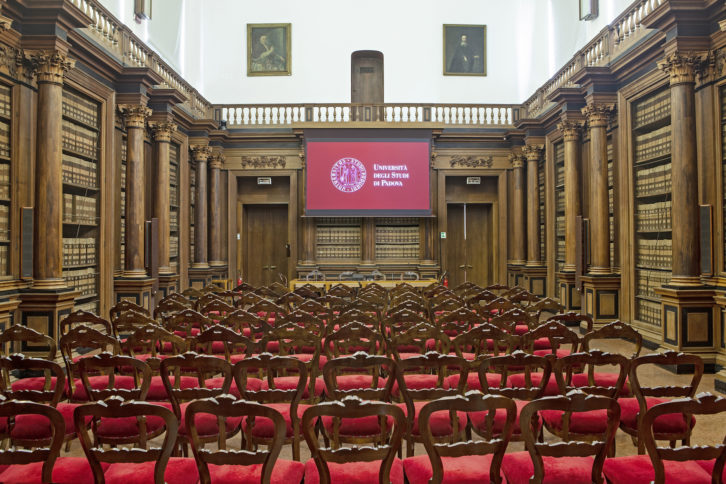
Overall, the project went smoothly and without critical issues. The need for new connections between the Main Hall and the Ancient Archive, via shafts and tortuous passages seemed rather worrying on paper, but was accomplished, thanks also the realisation of a new independent stretch in fibre optics, alongside the university’s data network.
“IT-AV convergence was one of the main issues distinguishing this project from other work we’ve done in the past,” says Tramarin. “Also worthy of note is the fact that the project involved the integration of equipment normally used in a broadcast context, such as the Blackmagic video mixer and the seven Sony PTZ cameras with relative remote controller.
“Our operators helmed the setup at the inauguration of the academic year, with the President of the Italian Senate as guest of honour, and other high-profile events.
“We’re honoured to have been chosen as suppliers to one of Italy’s most prestigious universities, and the fact that it’s the university of my hometown makes me personally even more proud.”
After completion
After the new systems had been up and running for several months, Dario Da Re, director of the university’s Digital Learning and Multimedia Office, comments: “All the objectives we set have been achieved. All the equipment installed fits perfectly into the various architectural contexts and even the impact in aesthetic terms of the most visible hardware, such as projectors, cameras and loudspeaker enclosures, is minimum.
“The adoption of Dante technology and PoE devices has reduced the number of cables running through the building, enabling enormous versatility, and now, wherever there is a network socket, it is possible to connect input devices such as cameras, or output units, such as monitors and projectors. This also enables us to create configurations for covering events different from the standard ones and, for particular events such as shows, it is now possible to increase the number of shooting angles and distribute the signals throughout the building. Set-up time for covering a conference or other events has effectively been reduced to a few minutes – the time it takes to switch on the systems and run a rapid test. This has enabled us, in the few months since installation was completed, to exceed the number of events recorded and streamed that we would normally carry out in an entire year and, above all, with half the staff used previously. We have also achieved the other aim of cutting the need to call in external services exclusively for events that require a large amount of AV and lighting equipment, such as theatre or music shows.”
www.amx.com
www.blackmagicdesign.com
www.derecom.it
www.mosaicogroup.com
https://pro.sony
